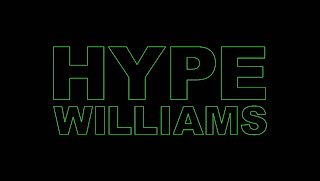The flicker of a moving image has long and diffuse history. Occasionally it has been put to use as an aesthetic effect or even a weapon - as the deliberately exaggerated by-product of early cinema's non-standardized frame rates. A feature of the historical deployment of the flicker effect has been its implicit reliance on the editing of frames - different colors, white/black, 24fps. As a result, because of the 3:2 pulldown, it's difficult for video versions to approximate the precise effects of Arnulf Rainer or The Flicker or N:O:T:H:I:N:G. Less specific to the material of celluloid, however, may be the aesthetic suggestion of the blurring of lines between image and formlessness, or between image and pure light / pure dark. Colors or light bleed into an image, aestheticize it despite "identification" or "story" by pulling it outside those realms and denaturing it.
Some of the rare images in Paul Sharits' flicker work depict violent or sexual acts. Sharits' films, and techniques, were not meant purely for their powers of provocation, however. He indicated on numerous occasions his desire to use cinema to enhance consciousness.
"In his flicker films, Sharits disrupts this process. He replaces the consecutive phases of action with solidly colored or black or white frames . The effect is literally dazzling . The viewer sees often violent bursts of light whose color and intensity are functions of the speed at which the colored frames and the complementary colors of spontaneously induced afterimages change. The oscillating colors not only foreground the pulsing light beam, they also reflexively remind the viewer of the physical limits of the frame and of the surface on which films are projected." (Stuart Leibman)
For Leibman's description of effects to make sense, of course, so much depends on this "viewer" glazed with modernist theory before the white screen. But perhaps we can talk about the impulse to produce such effects. What directs audiovisual creators to devise and deploy the flicker effect? In one respect it might be a push towards a total, consuming aesthetic vision. For Sharits, a mandala to "end war"; for today's pop artists, the mock-sublimity of an expression too big to fail (or too big for execution, craft, to even matter).
"Want you to see everything," sings Rihanna in "All of the Lights," the Kanye West track released a few months back. Enlisting the vocals of a whole slew of pop singers (Elton John, Alicia Keys, La Roux, etc., etc.), the track is a bit monstrous in size, slightly indeterminate in direction. This isn't simply a wall of sound, it's a wall of celebrity persona. The video, by Hype Williams, uses numerous bright flicker effects that destabilize the images (if they ever were stable) from any purely "functional" role, like telling a story, or creating a mood through mise-en-scene alone. The images flirt with pure color, they appear to filter into and out of one another, they heighten the sense of color within some of the shots. So many flashing lights - actually that phrase is, of course, the title of another Kanye West song. Probably someone better versed in Kanye Studies than me could say how deep this trope runs ...
... I think this is particularly fascinating for a guy like Kanye West - the tropes of education that run throughout his work, "can't tell me nothing," even the way Taylor Swift called him "an innocent." West: yet to be informed, yet to be instructed, yet to be enlightened. Weighed down by the necessity of enlightenment, West associates these themes in his lyrics - pain or trauma, with education and illumination. "Cop lights / flash lights / spot lights / strobe lights / street lights."
"In 1945 a Western force greater than electricity descended on the Japanese arkheion. The atomic assaults on Hiroshima and Nagasaki by the United States unleashed the heat and light of atoms, which threatened not only the Japanese archive but the "mansion called literature," the literary archive. It threatened to destroy the trace, to destroy even the shadows." Akira Mizuta Lippit, Atomic Light (Shadow Optics), p. 25 (for Adrian)
(Still from Radiohead's video for "House of Cards," made without cameras.)






















5 comments:
Others have noted the similarities between the Kanye video and Enter the Void--a film worth checking out, if only to further develop your post's ideas on flicker effects in post-classical narrative media.
Will/Zach:
ENTER THE VOID - Opening Title Sequence
Thanks for the tip - I haven't seen Enter the Void (mixed feelings about Noe in general) but from what I've heard, and Dave thanks for the link! - it would indeed be a good example to incorporate.
Well I'm not epileptic of something like that but i hate this effects in movies and discotheques, i got some headaches and eyes pain... i hate it really, thanks for the post is very informative another curious data about this in that in england a lot % of population can't watch the #D effect.
Goodness, there's a great deal of useful info in this post!
Post a Comment